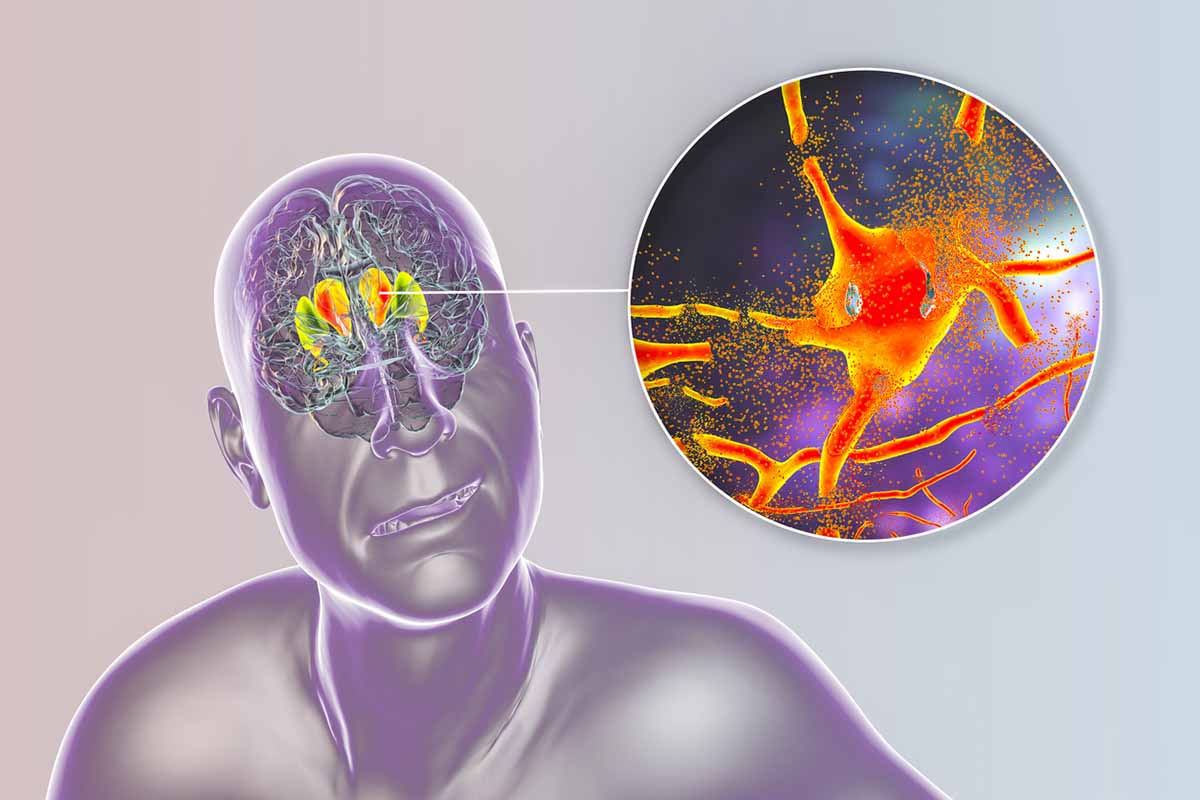Because this piece does not have an abstract, we have provided for your benefit the first 3 sentences of the full text.
To the Editor: Stiff person syndrome (SPS) is characterized by progressive muscle spasms, rigidity, and hyperlordosis. Progressive encephalomyelitis with rigidity (PER), a variant of stiff person syndrome, is characterized by limb and trunk rigidity, painful muscle spasms, ocular motor disturbances, dysphagia, dysarthria, and hyperekplexia. PER differs from SPS usually based on the presence of brainstem, autonomic, and long-tract signs and also a more aggressive course.
See letter by Wang and Newsome
Progressive Encephalomyelitis With Rigidity: Stiff Person Syndrome Variant Associated With Multiple Sclerosis
To the Editor: Stiff person syndrome (SPS) is characterized by progressive muscle spasms, rigidity, and hyperlordosis.1 Progressive encephalomyelitis with rigidity (PER), a variant of stiff person syndrome, is characterized by limb and trunk rigidity, painful muscle spasms, ocular motor disturbances, dysphagia, dysarthria, and hyperekplexia. PER differs from SPS usually based on the presence of brainstem, autonomic, and long-tract signs and also a more aggressive course.2 The case of a patient with PER is presented. He exhibited clinical features associated with limb rigidity and spasms; subsequently, he developed encephalopathy, dysarthria, and hyperhidrosis.
Case report. A 50-year-old man presented following a 3-week onset of gradual bilateral upper and lower extremity weakness, stiffness, and speech and swallowing difficulties. His past medical history was significant for multiple sclerosis (MS), atrial fibrillation, aortic valve disease with a prosthesis in place, congestive heart failure, and diabetes mellitus type II. The patient had been diagnosed with multiple sclerosis 2 years before and was receiving peginterferon β-1a 125 μg subcutaneously every 2 weeks; the last dose was received 3 weeks prior to presentation. His last MS exacerbation, 1 year earlier, was treated with intravenous methylprednisolone. At baseline, he had been able to walk with a walker, talk, and hold a coherent conversation.
Physical examination revealed generalized rigidity in all 4 extremities and decreased strength, at a power of 1/5. The patient’s sensory functions were normal. All cranial nerves were intact. He was unable to walk. Hyperreflexia in all limbs and upgoing toes were present.
Hyperhidrosis was noted. The patient’s vital signs were normal, except for a heart rate of 120 bpm. Laboratory analyses included a complete blood count and comprehensive metabolic panel; findings were within normal ranges.
Cerebrospinal fluid (CSF) analysis results were unremarkable. A paraneoplastic panel documented an elevated serum anti-glutamic acid decarboxylase 65 antibody presence at 122 nmol/L (normal value < 0.02 nmol/L). Electromyography evidenced no denervation activity. This profile suggests a diagnosis of a PER variant of stiff person syndrome.
One week of therapy with intravenous methylprednisolone and intravenous immunoglobulin provided no benefit. A trial of diazepam did not diminish the patient’s rigidity; however, baclofen, 10 mg 3 times daily, was helpful. With this improvement, the patient was transferred to a long-term care facility, where he died 1 month later due to cardiac arrest.
Stiff person syndrome is a rare condition with an incidence of 1 case per million people per year and a prevalence of 1-2 cases per million.3 The etiology of SPS is unknown, but an autoimmune etiology is established.3 Anti-glutamic acid decarboxylase (GAD) antibodies are consistently positive in patients with SPS.4 GAD is a rate-limiting enzyme required for the synthesis of γ-aminobutyric acid, critical for maintaining inhibitory pathways and to control musculature.3 Characteristic findings with SPS are progressive, fluctuating muscular rigidity and muscle spasms occurring mainly in the paraspinal and abdominal areas. The rigidity is more axial, leading to lumbar hyperlordosis and postural instability. Simultaneous activation of agonist and antagonist muscles creates most of the clinical findings in SPS patients. Symptoms are often stimulus activated (eg, loud noise, tactile stimulation, stress, or anxiety). SPS is a diagnosis of exclusion, initially based on clinical symptoms and reinforced by laboratory findings.
This case evidenced a variant of SPS known as progressive encephalomyelitis with rigidity, and the patient experienced SPS symptoms along with brainstem, autonomic, and long-tract signs. In a case series of 8 patients diagnosed with SPS, 2 individuals were suggested to have PER in the differential due to presence of transient oculomotor disturbances.5 PER is caused by several different pathogenic mechanisms and can be associated with antibodies of the anti-GAD, antiamphiphysin, and antiglycine types.6 Our patient was positive for anti-GAD antibodies. CSF analysis usually reveals mild pleocytosis; magnetic resonance imaging on T2 flair sequences may demonstrate increased signal intensity throughout the spinal cord and brainstem.7,8 Histologically, lymphocytic perivascular infiltrates can be present and gliosis is noted in the brainstem and spinal cord, but that has a limited role in the diagnosis of PER.8
Patients with PER respond less well to diazepam as compared to those with SPS.9 The similarity of clinical expressions and the pathogeneses of SPS and PER remain unclear. SPS and PER often coexist with other autoimmune diseases; diabetes mellitus occurs in 30%-60% of cases; autoimmune thyroid disorders, in 10%; and pernicious anemia, in 5%.2 Our index case had been diagnosed with multiple sclerosis, an autoimmune condition that can be associated with PER.
GAD antibodies are often elevated in people with diabetes mellitus, autoimmune polyendocrine syndrome, and other neurologic conditions such as cerebellar ataxia, limbic encephalitis, dancing eye syndrome, and Miller Fisher syndrome.10 Thus, diagnosing SPS can be a challenge. The presenting symptoms, physical findings, laboratory profiles, and other investigation results assist in determining the diagnosis.
PER is a rare entity of an unknown etiology. Beyond the autoimmune component of diabetes mellitus, certain thyroid disorders, and some anemias, an association with many other autoimmune diseases is not established. Perhaps multiple sclerosis and a PER variant of stiff person syndrome can coexist.
References
1. Shaw PJ. Stiff-man syndrome and its variants. Lancet. 1999;353(9147):86-87. PubMed CrossRef
2. Meinck HM, Thompson PD. Stiff man syndrome and related conditions. Mov Disord. 2002;17(5):853-866. PubMed CrossRef
3. Dalakas MC. Stiff person syndrome: advances in pathogenesis and therapeutic interventions. Curr Treat Options Neurol. 2009;11(2):102-110. PubMed CrossRef
4. Alexopoulos H, Dalakas MC. A critical update on the immunopathogenesis of stiff person syndrome. Eur J Clin Invest. 2010;40(11):1018-1025. PubMed CrossRef
5. Meinck HM, Ricker K, H×¼lser PJ, et al. Stiff man syndrome: clinical and laboratory findings in eight patients. J Neurol. 1994;241(3):157-166. PubMed CrossRef
6. Carvajal-Gonzסlez A, Leite MI, Waters P, et al. Glycine receptor antibodies in PERM and related syndromes: characteristics, clinical features and outcomes. Brain. 2014;137(Pt 8):2178-2192. PubMed CrossRef
7. Whiteley AM, Swash M, Urich H. Progressive encephalomyelitis with rigidity. Brain. 1976;99(1):27-42. PubMed CrossRef
8. McCombe PA, Chalk JB, Searle JW, et al. Progressive encephalomyelitis with rigidity: a case report with magnetic resonance imaging findings. J Neurol Neurosurg Psychiatry. 1989;52(12):1429-1431. PubMed CrossRef
9. Schmierer K, Valdueza JM, Bender A, et al. Atypical stiff-person syndrome with spinal MRI findings, amphiphysin autoantibodies, and immunosuppression. Neurology. 1998;51(1):250-252. PubMed CrossRef
10. Tohid H. Anti-glutamic acid decarboxylase antibody positive neurological syndromes. Neurosciences (Riyadh). 2016;21(3):215-222. PubMed CrossRef
aUniversity of Louisville, Department of Neurology, Louisville, Kentucky
bUniversity of Louisville, Department of Psychiatry, Louisville, Kentucky
Potential conflicts of interest: None.
Funding/support: None.
Patient consent: Consent was obtained from the patient to publish the case report, and the information has been de-identified to protect anonymity.
Published online: February 14, 2019.
Prim Care Companion CNS Disord 2019;21(1):18l02360
To cite: Naik S, Kolikonda MK, Lippmann S. Progressive encephalomyelitis with rigidity: stiff person syndrome variant associated with multiple sclerosis. Prim Care Companion CNS Disord. 2019;21(1):18l02360.
To share: https://doi.org/10.4088/PCC.18l02360
© Copyright 2019 Physicians Postgraduate Press, Inc.
Please sign in or purchase this PDF for $40.00.




